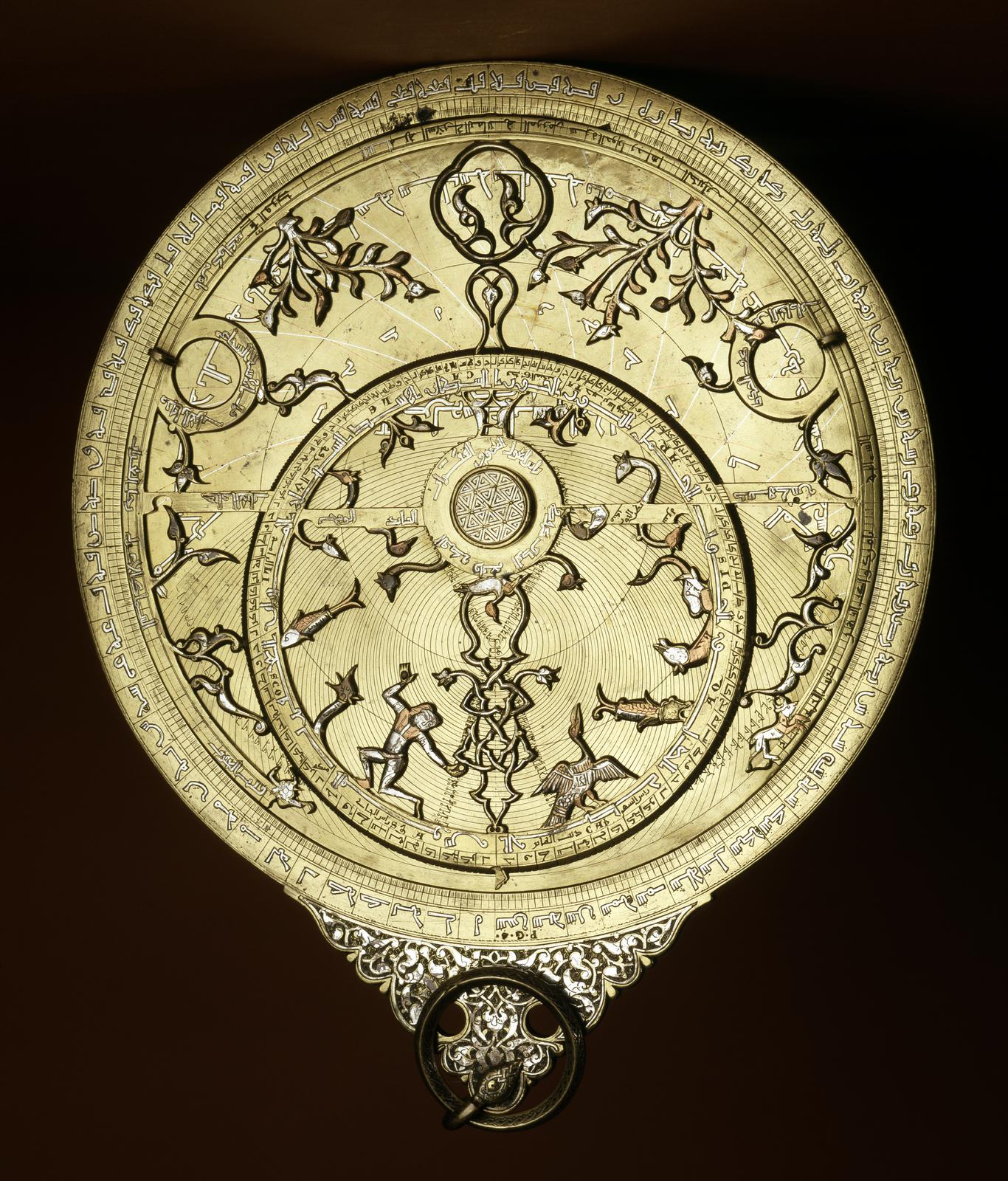Gallery:
Islam
Room / Case / #
42 / 10 /
Islam drives knowledge in geometry and mapping
The Muslim’s need to know the time of prayer and direction of Mecca drove some of the enquiry but much was pure inquisitiveness. Al Burini in the 11th C having measured the height of a mountain used geometry to work out the circumference of the world. A necessary measurement for determining longitude. His inquisitiveness led him to map the known world to this globe and he postulated the likelihood of a land mass where America is, not so much discovering America as inventing it. He was also able to advise his sponsor and Caliph what percentage of the world he ruled. Whether the Caliph was pleased with this knowledge is not recorded.
A key instrument in these endeavours was the astrolabe. The simple astrolabe, a device for measuring and recording angles, was invented by the Greeks in the 2nd C BCE. Knowledge of it was acquired by the Muslims through translations, in the 9th & 10th C in Bagdad. The Muslims dramatically improved its accuracy, sophistication and range of uses. Geoffrey Chaucer (14th C) compiled a treatise on the astrolabe based on Arabic sources. This astrolabe was made in 1241/2 and is about 32 cms in diameter. Notice the exquisite detail of the star pointers, fashioned as the beaks or tails of animals.

